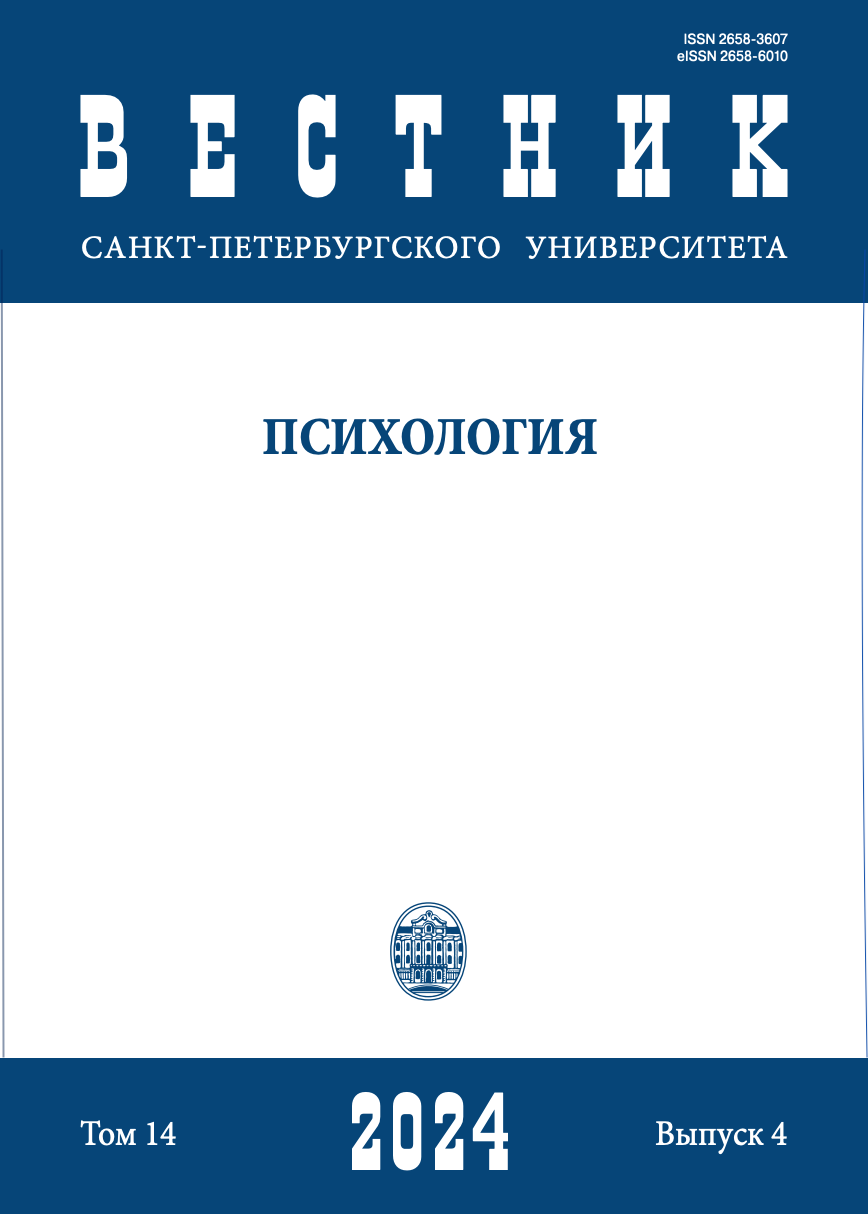A method for diagnosing components of a common discriminatory attitude
DOI:
https://doi.org/10.21638/spbu16.2024.405Abstract
The study draws attention to the fact that the diagnosis of discriminatory attitudes carries important information not only about the integration of representatives of out-groups into society, but also about the ability of society itself to develop. Despite the instability of researchers' interest in studying various aspects of the problem of accepting inequality due to various characteristics of "otherness" (age, gender, ethnicity, illness, etc.), the relevance of socio-psychological analysis of discriminatory attitudes remains equally significant. The purpose of this study is to develop and validate a methodology for diagnosing components of a common discriminatory attitude. The study involved 700 people, including 322 men (46%), 376 women (54%) aged 18 to 50 years (M=22.43 SD=8.23). We assumed that the structure of the discriminatory attitude is similar to the structure of the social attitude and includes three components (emotive, cognitive and conative). The design of the study involved exploratory and confirmatory, factor analysis, correlation analysis and analysis of general statistics. To identify the components of a general discriminatory attitude, we have developed questions related to the emotive and behavioral components, and the cognitive component is measured using the questions of orientation to social dominance of the J. R.R. Tolkien methodology. Dakkita. In addition, questions aimed at directly assessing the degree of rejection of representatives of out-groups (target groups of discrimination) were used to assess convergent validity. The substantive validity of the items assigned to the components and the scale as a whole is confirmed by the assessment of specialists. As a result of the study, the three-component structure of the discriminatory attitude was confirmed, the reliability of the scales was assessed by removing a point and the scale as a whole, convergent validity was established by calculating correlations of the components of the attitude and the scale questions of direct assessment of the severity of rejection of representatives of out groups. The psychometric indicators of the technique meet the basic requirements for diagnostic tools.
Keywords:
personality, in-group, out-group, discriminatory attitude, diagnosis, structure, components, validation
Downloads
References
References
Downloads
Published
How to Cite
Issue
Section
License
Articles of "Vestnik of Saint Petersburg University. Psychology" are open access distributed under the terms of the License Agreement with Saint Petersburg State University, which permits to the authors unrestricted distribution and self-archiving free of charge.




